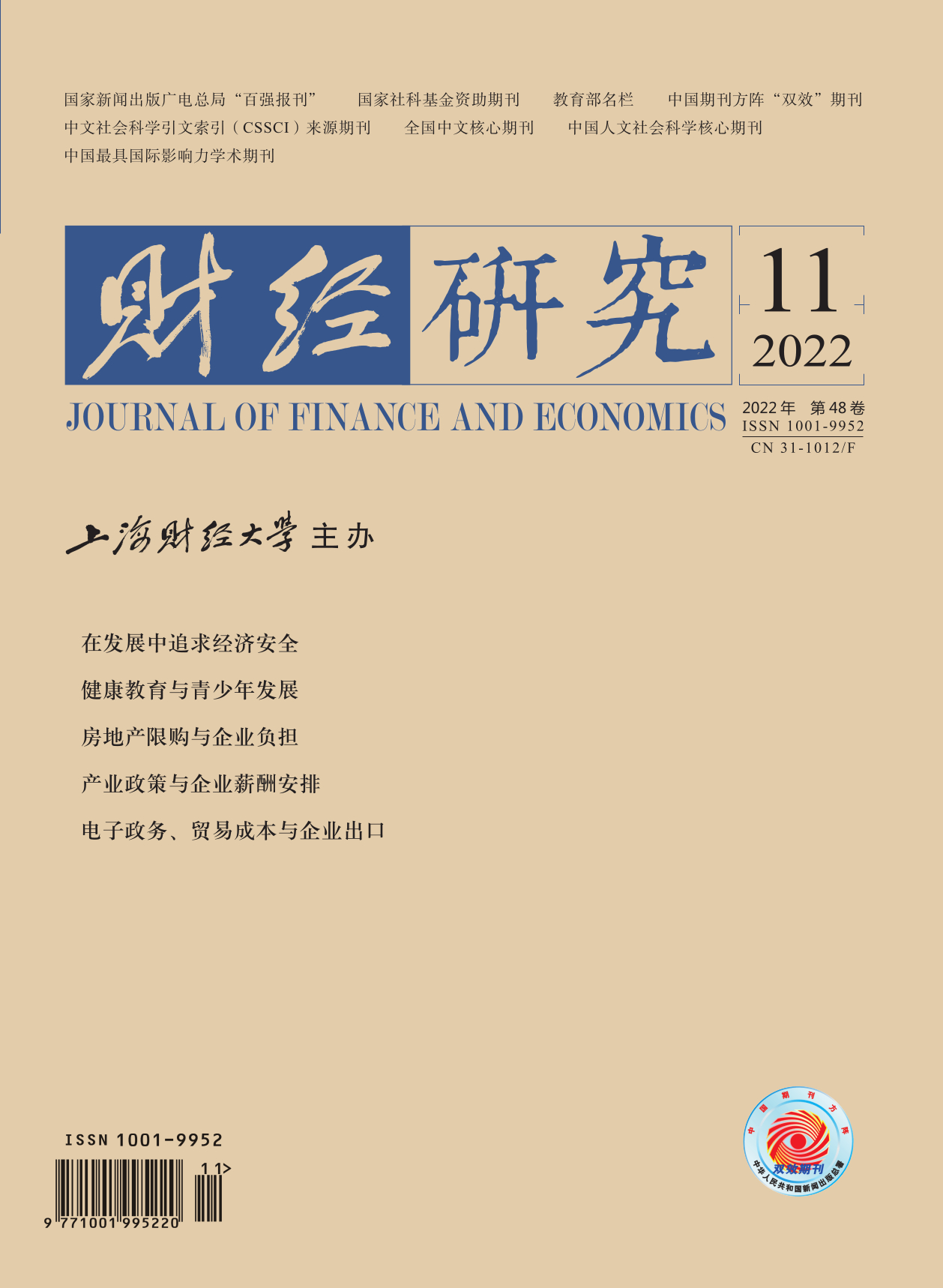在中国大举推进自由贸易区建设、构筑新型开放格局的背景下,科学评估现有自由贸易区的贸易效应是一项重要和紧迫的任务。文章基于“国家/地区—产品—时间”层面的数据,采用双重差分法和三重差分法,利用高维固定效应泊松伪极大似然估计技术实证分析自由贸易区生效后不同关税减让幅度与关税减让过渡期对进口的影响。研究发现:(1)中国自由贸易区平均优惠关税呈现较明显的下降趋势,而且关税减让过渡期越长,关税减让幅度越大;不同产品、不同过渡期的关税减让幅度存在较大差异。(2)关税减让显著促进了进口,关税减让引致的进口替代弹性为6.03;但由于自由贸易区使用成本的限制,只有关税减让幅度超过5%才能显著促进进口。(3)随着关税减让幅度的增加,进口促进作用呈逐步增强的特征,同时关税减让过渡期越长,进口促进作用呈下降趋势,但过渡期结束后关税减让对进口的促进作用增加近1倍。(4)不同属性产品对自由贸易区关税减让幅度和过渡期的进口反应呈现不同特征,总体上关税减让对农产品的进口影响不显著,而对工业品、中间品、非中间品、战略品和非战略品的进口存在显著促进作用。文章的研究结论对进一步分析自由贸易区的总体贸易效应、福利效应以及稳妥推进未来自由贸易区谈判和贸易政策制定提供了更为坚实的科学依据。
中国自由贸易区关税减让的进口贸易效应——基于关税减让幅度和过渡期的视角
摘要
参考文献
6 吕建兴,曾寅初,张少华. 中国自由贸易协定中市场准入例外安排的基本特征、贸易策略与决定因素−基于产品层面的证据[J]. 中国工业经济,2021b,(6):80−98. DOI:10.3969/j.issn.1006-480X.2021.06.005
7 Anderson J E, Van Wincoop E. Gravity with gravitas: A solution to the border puzzle[J]. American Economic Review,2003,93(1): 170−192. DOI:10.1257/000282803321455214
8 Baier S L, Bergstrand J H, Clance M W. Heterogeneous effects of economic integration agreements[J]. Journal of Develop- ment Economics,2018,135: 587−608. DOI:10.1016/j.jdeveco.2018.08.014
9 Baier S L, Bergstrand J H. Do free trade agreements actually increase members’ international trade?[J]. Journal of International Economics,2007,71(1): 72−95. DOI:10.1016/j.jinteco.2006.02.005
10 Baier S L, Bergstrand J H, Feng M. Economic integration agreements and the margins of international trade[J]. Journal of International Economics,2014,93(2): 339−350. DOI:10.1016/j.jinteco.2014.03.005
11 Besedes T, Kohl T, Lake J. Phase out tariffs, phase in trade?[J]. Journal of International Economics,2020,127: 103385. DOI:10.1016/j.jinteco.2020.103385
12 Bown C P, Tovar P. Trade liberalization, antidumping, and safeguards: Evidence from India's tariff reform[J]. Journal of Development Economics,2011,96(1): 115−125. DOI:10.1016/j.jdeveco.2010.06.001
13 Broda C, Weinstein D E. Globalization and the gains from variety[J]. The Quarterly Journal of Economics,2006,121(2): 541−585. DOI:10.1162/qjec.2006.121.2.541
14 Cadot O, Carrère C, De Melo J, et al. Product-specific rules of origin in EU and US preferential trading arrangements: An assessment[J]. World Trade Review,2006,5(2): 199−224. DOI:10.1017/S1474745606002758
15 Garred J. The persistence of trade policy in China after WTO accession[J]. Journal of International Economics,2018,114: 130−142. DOI:10.1016/j.jinteco.2018.06.001
17 Jean S, Bureau J C. Do regional trade agreements really boost trade? Evidence from agricultural products[J]. Review of World Economics,2016,152(3): 477−499. DOI:10.1007/s10290-016-0253-1
18 Kee H L, Nicita A, Olarreaga M. Import demand elasticities and trade distortions[J]. The Review of Economics and Statistics,2008,90(4): 666−682. DOI:10.1162/rest.90.4.666
19 Larch M, Wanner J, Yotov Y V, et al. Currency unions and trade: A PPML re-assessment with high-dimensional fixed effects[J]. Oxford Bulletin of Economics and Statistics,2019,81(3): 487−510. DOI:10.1111/obes.12283
20 Limão N, Tovar P. Policy choice: Theory and evidence from commitment via international trade agreements[J]. Journal of International Economics,2011,85(2): 186−205. DOI:10.1016/j.jinteco.2011.06.002
21 Manchin M, Pelkmans-Balaoing A O. Clothes without an emperor: Analysis of the preferential tariffs in ASEAN[J]. Journal of Asian Economics,2008,19(3): 213−223. DOI:10.1016/j.asieco.2008.03.001
23 Silva J M C S, Tenreyro S. The log of gravity[J]. The Review of Economics and Statistics,2006,88(4): 641−658. DOI:10.1162/rest.88.4.641
24 Urata S, Okabe M. Trade creation and diversion effects of regional trade agreements: A product-level analysis[J]. The World Economy,2014,37(2): 267−289. DOI:10.1111/twec.12099
25 Yotov Y V, Piermartini R, Monteiro J A, et al. An advanced guide to trade policy analysis: The structural gravity model[M]. Geneva: WTO, 2016.
引用本文
吕建兴, 张少华. 中国自由贸易区关税减让的进口贸易效应——基于关税减让幅度和过渡期的视角[J]. 财经研究, 2022, 48(11): 139-153.
导出参考文献,格式为:





 5166
5166  5461
5461

